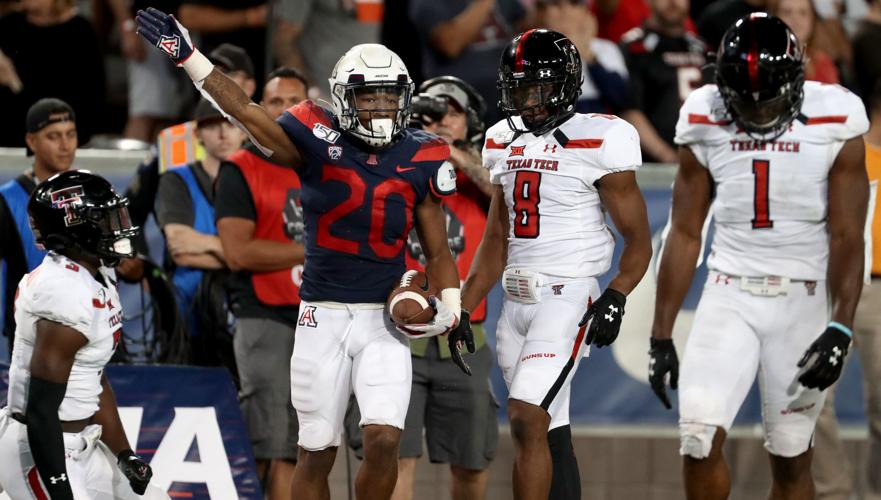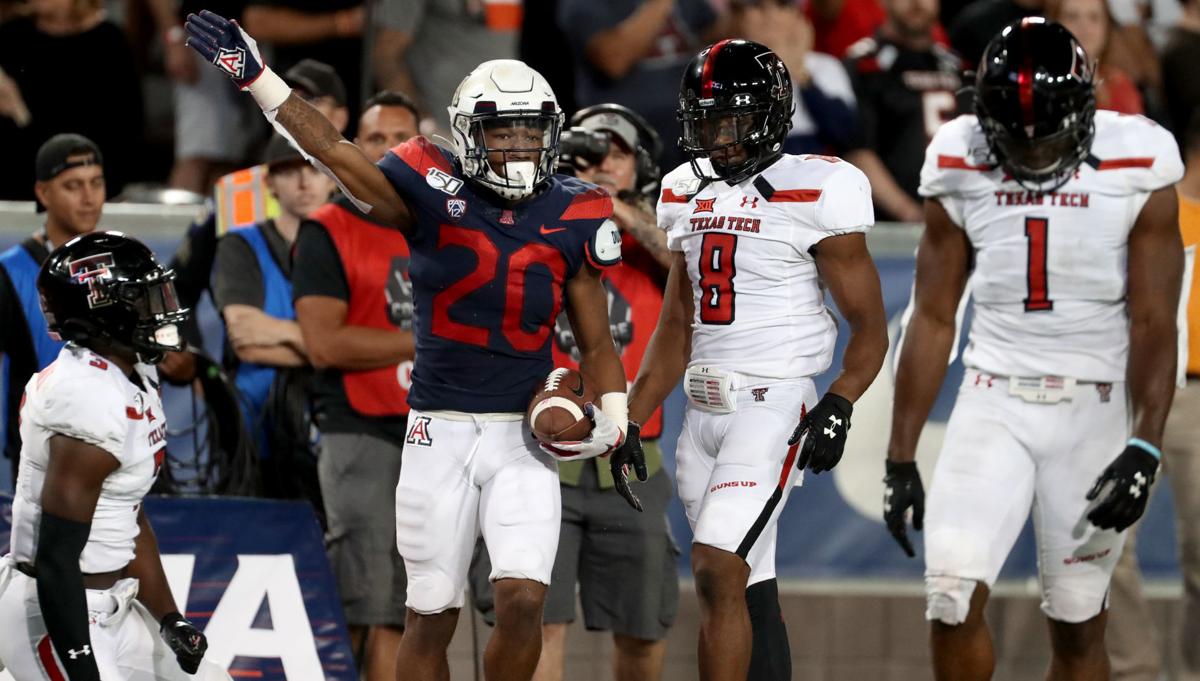Each week throughout the football season, we’ll take an in-depth look at the Arizona Wildcats from a statistical perspective. Here’s the latest edition of “Cats Stats.”

Editor’s note: Each week throughout the football season, we’ll take an in-depth look at the Arizona Wildcats from a statistical perspective.
The Arizona Wildcats rank first in the Pac-12 and fifth in the nation in third-down conversion percentage. That figure – 58.7% — received a turbo boost against Texas Tech last week.
The Cats converted 15 of 21 third downs against the Red Raiders – a historically efficient output. Per UA research, Arizona’s 71.4% success rate was its highest since 2010 with a minimum of 10 attempts.
Making that feat all the more remarkable: Texas Tech entered last weekend with the second-best stop rate in the country, limiting opponents to 12.9% on third down.
In this bye-week installment of “Cats Stats,” we’re going to examine how Arizona was able to pull that off – and what lessons can be learned from the data.
The simplest explanation is that the Wildcats put themselves in favorable positions to convert third downs. Seven of the 21 attempts were third-and-short, which we’re defining as 1-3 yards. Seven were third-and-medium (4-6 yards). And seven were third-and-long (7-plus yards).
As expected, Arizona performed significantly better in third-and-short or -medium scenarios than in third-and-long. The Wildcats went 12 of 14 on third-and-short/medium against the Red Raiders, 3 of 7 on third-and-long.
Arizona was incredibly efficient in the second half, converting 9 of 10 third downs. Only one required the Wildcats to gain more than 6 yards. On half they needed only 1 yard. They converted all five.
As many have noted over the years, the key to converting on third down is … what happens on first and second down. The shorter the distance needed to move the chains, the more options the offense has. The less predictable you are, the harder it is for the defense to stop you.
Arizona took a big step forward in that regard the previous week against NAU, converting 9 of 14 third downs. Nine of the 14 fell into the short or medium category; Arizona converted six of those nine.
Asked after the game why Arizona fared better on third down against NAU than in the season opener vs. Hawaii, senior quarterback Khalil Tate said: “We did better on first and second down.”
His analysis was spot on. The Wildcats converted only 3 of 11 third downs against the Rainbow Warriors. Ten of the 11 required a gain of 7 or more yards. Six required 10 or more yards.
“We had a lot of third-and-10s, which is pretty difficult for an offense,” Tate said. “I think we did a great job on first and second down (against NAU) really getting those yards and making sure we were ahead of the sticks.”
The average yardage needed to convert on third down in Arizona’s first three games further illustrates the point.
The average against Hawaii was 9.6 yards — a tough ask for any offense. The average against NAU was 5.4 yards. Against Texas Tech, it was about the same — 5.5 yards.
But there was a significant disparity between the first and second halves against the Red Raiders.
The Wildcats needed to gain, on average, 7 yards on their 11 third-down attempts in the first half. They converted six. In the second half, the average dropped to 3.9 yards.
At one point, Arizona had four third-and-1s in a row. Tailback Gary Brightwell converted all four on the ground. The last two came during the Wildcats’ 13-play, 99-yard touchdown drive in the fourth quarter. Those were the only third-down attempts during that possession.
“We had some manageable third downs,” UA coach Kevin Sumlin said after the game. “Khalil scrambled and made a few. We ran it and made a few. A bunch of different ways.”
Here’s the breakdown: seven runs by tailbacks, six passes by Tate and two runs by Tate. The final five conversions came via the run, including the aforementioned stretch of third-and-1s.
The Wildcats were in such dire straits on third down against Hawaii that they couldn’t even try to run. Eight of those plays were pass attempts. Two were scrambles by Tate. The other resulted in a sack.
Oddly, Arizona didn’t attempt to run for a first down on third down until late in the second quarter against NAU. The Wildcats had three third-and-shorts earlier in the game, but offensive coordinator Noel Mazzone elected to pass each time. Arizona converted 2 of 3. The Wildcats got to fourth-and-1 on the other and extended the drive.
Arizona’s overall third-down numbers show how much first and second down matter – although the Wildcats’ success rate so far doesn’t perfectly correlate with the distance needed to gain first downs.
Arizona is 12 of 16 (75%) on third-and-short. The Wildcats are 8 of 22 (36.4%) on third-and-long. They have been unsustainably exceptional on third-and-medium, converting 7 of 8 (87.5%).
We don’t have a viable explanation for the latter. One working theory: Tate’s ability, when healthy, to keep plays alive.
One thing we do know is that passing efficiency, for most mortal quarterbacks, decreases as the yardage needed to gain a first down increases. ESPN’s statistical splits don’t precisely coincide with our definition of short-, medium- and long-yardage situations, but you can still see the impact by looking at them.
For his career, Tate has completed 39.2% of his passes on third-and-6 or longer, averaging 6.54 yards per attempt with a 6-to-8 touchdown-to-interception ratio. When needing 5 or fewer yards on third down, Tate is a 62.7% passer who averages 11.3 yards per attempt with a 9-1 TD-INT ratio.
Tate’s completion percentage has risen in both circumstances every season. Still, the importance of first and second down to set up third-and-manageable situations can’t be overstated.






